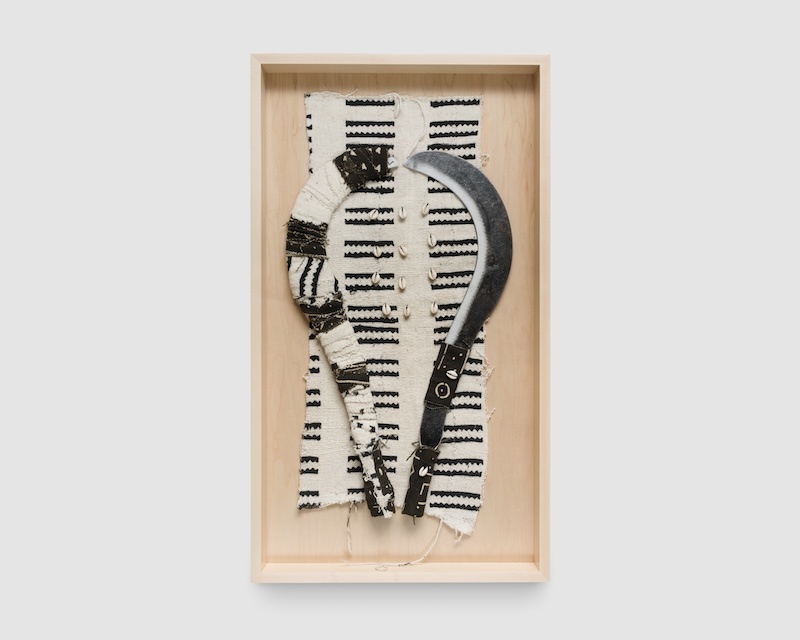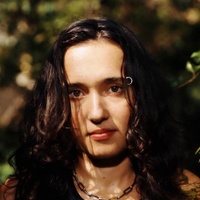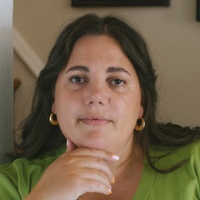On creating from a place of grief and healing
Prelude
Patrisse Cullors believes in the power of alchemy. The NYT bestselling author, artist, and abolitionist has long been drawn to the unseen, and is inspired by the beauty of freedom found in different planes and dimensions. Over the last two decades, her art and performances have been featured at cultural institutions across the globe including The Broad, The Geffen Contemporary at MOCA, The Fowler, Frieze LA, Hammer Museum, Southern Guild and more.
In addition to her work as a solo artist, Patrisse is the co-founder of the Crenshaw Dairy Mart as well as the founder of The Center For Art and Abolition, a trailblazing nonprofit organization dedicated to empowering abolitionist artists and leveraging the transformative power of art to catalyze social change. Her current work and practice is focused on “Abolitionist Aesthetics,” a term she advanced and popularized to help challenge artists and cultural workers to aestheticize abolition.
Conversation
On creating from a place of grief and healing
Artist and abolitionist Patrisse Cullors discusses the power of spiritual protection, keeping care in mind within your creativity, and why artists need to be given the space to tell the truth.
As told to Caitlin McCann, 1986 words.
Tags: Art, Meditation, Magic, Process, Identity, Inspiration, Mental health.
Your first solo show, Between the Warp and Weft: Weaving Shields of Strength and Spirituality is up now at Charlie James Gallery in Los Angeles. Something I admire about this show is that you’ve dedicated each piece to a different Black woman in your life, whom you want to extend spiritual protection to. What led you to that decision?
There’s multiple stages survivors of lots of violence go through, emotionally, spiritually, and psychologically. During the most recent hell I experienced, I was in a stage of deep grief and pain that made me want to shrink myself. That was a new experience for me. That’s not really my trauma response, which is obvious because I’m a public figure. So much of my [previous] trauma responses were to fight and to actively be seen. But I think I experienced such a blow to myself that I just kind of shrunk.
A lot of my [recent] work has been deeply introspective, kind of quiet. This show has been deeply contemplative. I feel stronger and I feel like I want to fight again, but differently. The works, for me, have been an opportunity to think about, what does protection actually look like in a world where women at large, and Black women specifically, are not just not protected, but actively harmed? I can’t actually cause harm. I don’t want to. But I can make these objects that are spiritually protective. I believe deeply in spiritual protection. I believe in the unknown to be a source of protection. These objects are based around using what we already have. These materials of metal, of fabric, of cowrie shells… how do we use them and create these protective symbols? I’m dedicating them to women in my life because I want to imbue them, both the objects with the women. These are women who I have seen that also deserve that protection and need that protection.
I’ve been thinking a lot about Oya, a warrior goddess. Her object is a full-on machete. She is the strong winds. When there’s wind and storms outside, that is her. She’s the goddess of the marketplace. She’s an entrepreneur. She’s a business woman. She’s all these really fierce things and so she has been what I’ve been channeling as I’ve been building out these works.

Ogbe Oyeku, dedicated to my mother, Cherice Foley.
I love the symbolic meaning of the swords and daggers that you’ve used in the pieces. Do you practice tarot?
Yeah, I’ve been doing that since I was a teenager.
That makes a lot of sense then, given the duality of the swords not only being a weapon but a tool you can use in order to discern. Swords represent the air element and intellect, similar to what you’re saying about Oya.
That’s exactly right.
Is the number of cowrie shells used, or the pattern in each piece, intentional? When I was doing research in preparation for this interview, I was relating it to I Ching.
Yeah, so this is a divination system. This divination system actually predates the I Ching and some say it’s the first binary code. It comes from the Yoruba people, and the actual code you’re seeing is Odu Ifá. Similar to astrology or I Ching, when you’re born, you get an Odu. You get one of these symbols. Each of these symbols have thousands of verses. It’s an oral history, so much of it’s not written down and it’s been told over and over again. So this is our divination system that I’m documenting through these works.

Ogbe Iruson, dedicated to my mentor, Angela Davis.
What is the interpretation for the copper dagger?
That pattern is called Ogbe Ogunda, and that specific Odu is actually mine, that’s why I’m dedicating it to myself. That Odu has a lot of Oya in it. There’s a beautiful story about Oya being crowned the king in this Odu. She’s one of the Orisha, who’s in those of us who are queer and trans. She’s sort of seen as trans. She transitions into a king. She’s a really interesting goddess warrior.
What are some ways you protect your creative practice, while also leaving room for you to transform?
I’m interested in signs and symbols as a way to decipher and discern what is happening in the present, but also what’s happening beyond what we can see. A lot of my practice happens first just in my body. What do I feel? What do I see? What do I know? What don’t I know?
I think a lot about the use of art objects pre-colonialism, when art objects were actually not on walls and they were used for everyday life, like a tarot deck or Odu, the symbols I’m creating. All these tools, as you said earlier, they’re literally from my lineage or from my ancestry and so, how do I bring them forth and aestheticize them?
I’m really interested in the materiality of that and that’s why I’m dedicating however long it’s going to take for me to create all 256 Odus. These are the next 15 of the 256. The first 16 I did was just Malian mud cloth and cowrie shells. Then Oya came into the mix as I was sort of sitting and thinking about protection, and I was like, “Oh, I want to use metal now.” There’s all these ways that I’ve been really sitting with these materials and giving myself a lot of spaciousness.
So, yeah, that process happens. It often happens in nature. It happens around trees, around water, sitting with a cowrie shell, sitting at my altar, just straight bruha shit.

Ogbe Ogunda, dedicated to Patrisse Cullors.
Yes. It’s that thing where as an artist, you have to consciously make room, especially if you’re in an overstimulating environment, to just be able to sit still and listen to yourself or what the universe is telling you or whatever. Do you practice visualization methods or meditation?
Yeah, I have a mindfulness meditation practice under Thich Nhat Hanh’s mindfulness meditation. I’ve been doing that since I was 19 years old. I do a lot of meditation work and visualizing. I have a whole entire method around imagination practice. I don’t know if I use it necessarily for the visual art that I make. Like for the show, I wouldn’t necessarily say I used my meditation practice for it, but I do feel like everything is being used. Everything I’m doing is being used, some of it intentionally, some of it not intentionally.
You’ve used the term “Abolitionist Aesthetics” as a way to make the concept of abolition tangible. I think sometimes people have a hard time wrapping their head around what abolition looks like. Part of it is a transformation process, and transformation can seem very intangible at times, especially when it’s relevant to things like societal systems or social constructs. Can you talk about that more and how it ties into your recent work?
Absolutely. If we understand the current aesthetic nature in which we live, which is an aesthetic of violence, patriarchy, racism, homophobia, transphobia, and harm, and we see that in all the ways in which our current system is shaped; it’s a system that privileges police violence and policing, it privileges military and military weaponry, and it is a place that centers our culture around punishment, shame, and revenge. If we’re talking about Abolitionist Aesthetics and the aestheticization of abolition, we’re talking about building out a new culture, a new visual aesthetic. And that looks like building out a culture of care, an economy of care. It looks like walking into someone’s society and seeing the centering of human beings and plant beings and the earth and the universe first before profit. We wouldn’t even have an understanding of billionaires because they wouldn’t exist.
Abolitionist Aesthetics is really a part of a legacy of, for me, the intersection of fine art and abolition. All the art objects that have been looted and pillaged from indigenous communities and villages that live in museums. Some can say they’re being imprisoned in a museum and what does it look like to set them free? My work isn’t like, “I’m an abolitionist.” That’s not the visual aesthetic that I’m taking, but I am thinking about systems of care and thinking about systems of protection against some of the most vulnerable groups of people. That is the visual aesthetic in which I’m approaching my work and the conversations that I want to have around my work. I want to make work where the people that see it feel cared for, but also where I feel cared for.

Ogbe Ika, dedicated to my late mentor, Kikanza Ramsey Ray.
To pull outside of my own individual art practice, I’m thinking about the collective practice of human beings. What would our art world look like if we lived in a true abolitionist society? What would be the use of a museum? Would there be a use? What would be archived? I think a lot about what will happen when we end the use of policing and prisons. Because we will, just like we ended chattel slavery. We will eventually end the use of police and prisons. Will we archive those prisons? I think a lot about how Auschwitz is archived and how the Japanese internment camps here in California are archived as a way to remind the community what we did and what we won’t come back to. That is how I think about abolitionist aesthetics.
What do you think the responsibility is of an artist in 2024? Not all art has to touch on politics and current events, even escapist art has its function, but it feels like a confusing time to be an artist when the world is in crisis mode.
I think artists should tap into the parts of themselves where they feel the most sense of grief and the most sense of healing and create from that place. I feel very trepidatious to tell an artist what to do versus to give an artist access to their own bodies as a place to know where to go. I think a lot about the Black Arts Movement and how some of the art was right on the nose, like Gil Scott-Heron’s song, “The Revolution Will Not Be Televised,” and that refrain over and over again. Then I think about so many other Black artists’ work that were just like…Like Noah Purifoy who was looking at assemblage or Betye Saar who’s just using what’s around them to develop a new visual language. Or I think about Black abstract artists who were not talking about anything that was happening in the ’60s and ’70s, but our context is our context and so they were imagining something different and putting it down.
We need diversity in how we approach being artists and what we share. That diversity is really important to me. What we don’t need is to be censored as artists and to be told what not to say for fear of collectors or board members on museum boards. That is very tricky territory. What artists need is the spaciousness to be honest and tell the truth about where they’re at. Sometimes that looks like telling the truth about what’s happening and making us look at it and sometimes it’s the visualization of a future which we all deserve.
Patrisse Cullors Recommends:
Alexis Pauline Gumps, Undrowned: Black Feminist Lessons from Marine Mammals
Korean spas
Daily gratitude practice
- Name
- Patrisse Cullors
- Vocation
- author, artist, abolitionist
Some Things
Pagination



